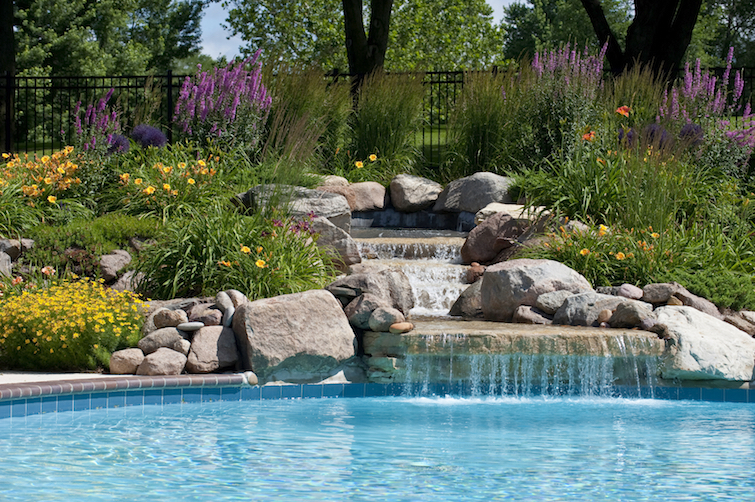How To Open Your Pool for Spring
April 01, 2015 at 02:00 PM

Whether you're a veteran pool owner with several seasons under your proverbial belt or a brand new pool owner, everyone can use a few pro tips for how to open a pool for swimming season. Read on below for what to do to get your pool ready for spring:
The Setup
First, remove any and all plugs from all suction and return lines and fill your pool to the desired level. Having done that, make sure the pool pump is both filled and primed.
Start the pump and confirm water is flowing. At this point, check for any leaks or wet spots around the equipment. This step is crucial, as any growing pools of water under the pump could indicate a pump seal leak that will destroy the motor before the summer is out.
Testing
Once the pool is full and running, it's time to test the chemical levels. Chlorine will likely be nonexistent (at 0 ppm), while the levels of pH, alkalinity, and hardness will vary from pool to pool and will need adjustment.
Whether home testing or taking water samples to the local pool store, here, for reference, are the levels to shoot for:
- Chlorine at 1.0 – 3.0 ppm
- pH between 7.2 and 7.6
- Alkalinity between 80-120 ppm
- Calcium hardness between 150-225 ppm
Chemical Adjustment
Chemical manufacturers typically provide recommended dosages, depending on the size of the pool. The simplest strategy is to follow them, remembering the two golden rules of adding chemicals: only add chemicals to a pool that is running, and only add chemicals to water, not water to chemicals.
NOTE: Use leftover chemicals from the previous year before newly purchased ones, but be aware that over time they may have lost some of their punch. Carefully open these older chemicals outdoors, keeping your face clear of the openings to avoid a blast of harmful substance into the eyes and nose.
Be careful of your pool's liner (or colored plaster). Chemicals can easily discolor these, so never allow direct contact between them and the chemicals.
Add the recommended chemicals bit by bit, in small amounts, with the filter running. This is to ensure an even distribution and dilution of chemicals so that subsequent water tests are accurate. Dumping all the chemicals in one spot and then testing the water will skew the results and leave you helpless to proceed (or cause you to proceed incorrectly).
A few key points concerning specific chemicals: The first concerns copper-based algaecide. Again in the interest of protecting the liner or plaster, be sure that pH levels are in balance BEFORE using such algaecide, as a subsequent rapid change in pH can throw copper out of suspension and stain surfaces.
Also, you'll probably need to shock. As always, add chemicals to water. Fill a bucket, then add granular shock gradually, mixing well. Pour the mixture around the edge of the pool with the pump running.
Re-Testing
As the season wears on, it's important to stay vigilant and test the pool on a weekly basis. One can test the pool at home with test strips, or take water samples to local pool professionals. When using the strips, be sure to keep your fingers off the testing area, and read the results immediately. For samples, collect water by inverting a clean bottle 18 inches under the surface of the water, then turning it upright. This will ensure the best representation of your pool's chemical makeup.
Cleaning and Circulation
Once the water is balanced, set the pool's timer to run the pump during the day, when the most intense sunlight is hitting the water. Since UV rays destroy chlorine, the daytime circulation of water will best keep the pool sanitized.
Vacuum and skim the pool regularly, being sure not to allow too much debris to build up on or under the surface of the water.
Take the time to get your pool ready for the season, and you'll ensure a happy and healthy poolside experience.
Learn more about how to maintain a clean and clear pool here.